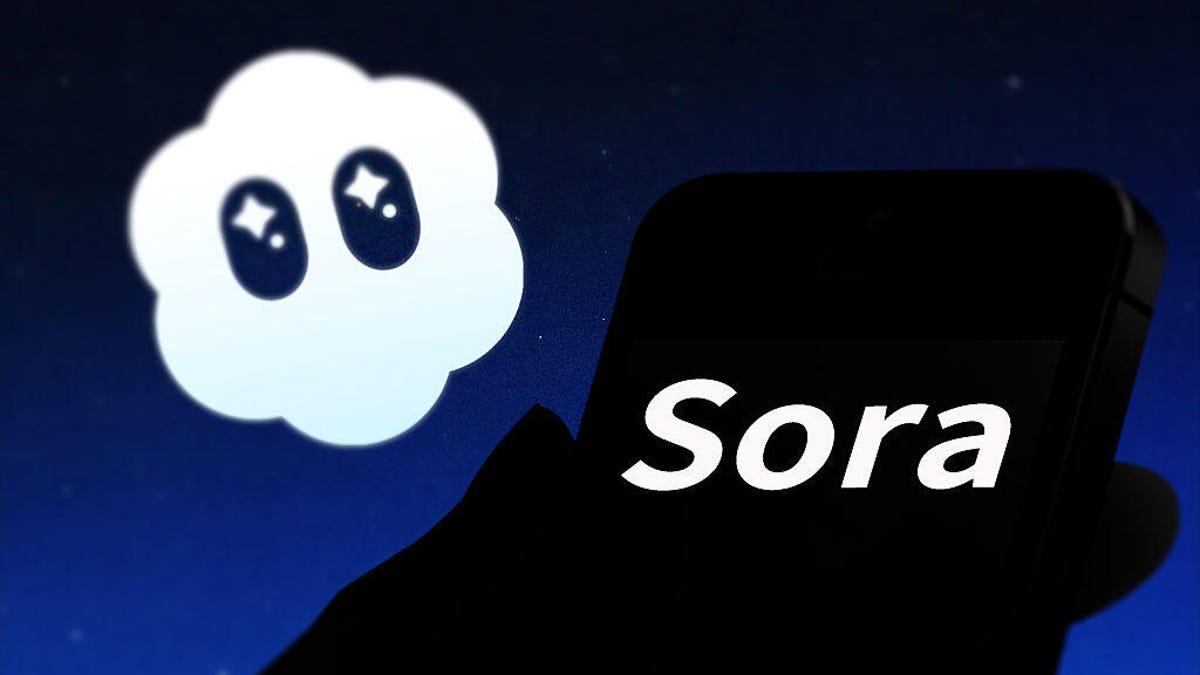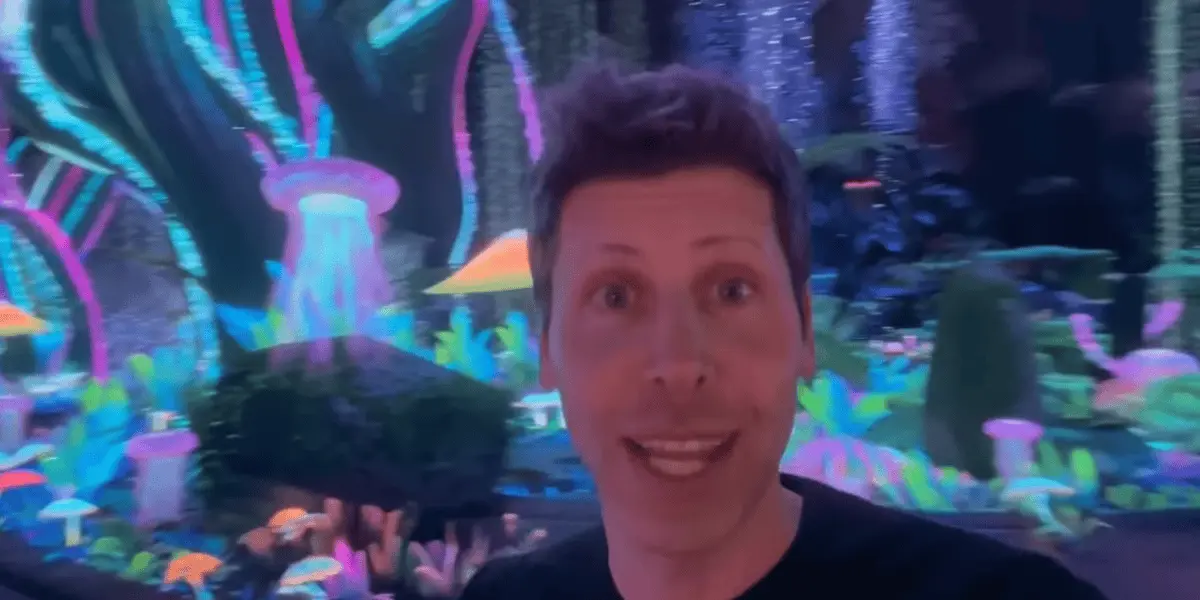OpenAI's Sora Video Generator Struggles with Gymnast Physics, Highlighting AI's Limitations
2 Sources
2 Sources
[1]
Twirling body horror in gymnastics video exposes AI's flaws
On Wednesday, a video from OpenAI's newly launched Sora AI video generator went viral on social media, featuring a gymnast who sprouts extra limbs and briefly loses her head during what appears to be an Olympic-style floor routine. As it turns out, the nonsensical synthesis errors in the video -- what we like to call "jabberwockies" -- hint at technical details about how AI video generators work and how they might get better in the future. But before we dig into the details, let's take a look at the video itself. In the video, we see a view of what looks like a floor gymnastics routine taking place at an Olympics-like sporting event. The subject of the video flips and flails as new legs and arms rapidly and fluidly emerge and morph out of her twirling and transforming body. At one point, about 9 seconds in, she loses her head, and it reattaches to her body spontaneously. "As cool as the new Sora is, gymnastics is still very much the Turing test for AI video," wrote venture capitalist Deedy Das when he originally shared the video on X. The video inspired plenty of reaction jokes, such as this reply to a similar post on Bluesky: "hi, gymnastics expert here! this is not funny, gymnasts only do this when they're in extreme distress." We reached out to Das, and he confirmed that he generated the video using Sora. He also provided the prompt, which was very long and split into four parts, generated by Anthropic's Claude, using complex instructions like "The gymnast initiates from the back right corner, taking position with her right foot pointed behind in B-plus stance." "I've known for the last 6 months having played with text to video models that they struggle with complex physics movements like gymnastics," Das told us in a conversation. "I had to try it [in Sora] because the character consistency seemed improved. Overall, it was an improvement because previously... the gymnast would just teleport away or change their outfit mid flip, but overall it still looks downright horrifying. We hoped AI video would learn physics by default, but that hasn't happened yet!"
[2]
Disturbing video reveals shocking flaws in Open AI's Sora video...
OpenAI's generative artificial intelligence video maker has techies in a twist after the tool, named Sora, created a creepy clip of a gymnast contorting her body in a series of astounding -- and entirely unnatural -- moves. The unsettling visuals, requested by a Sora user via text prompt, showed the dancer spinning her way erratically through a series of mostly impossible stunts. Occasionally, the body appeared to be flying away as well -- in what appeared to be an exorcism in progress. Critics were quick to point out that the breakthrough AI has yet to pass the "Turing Test" -- a term used to describe how machines display human-like intelligence, or lack thereof. The fintech worker who made the footage said on X that gen AI gymnastics videos are currently the barometer for how successful the self-made footage can be -- due to the wide range of motion capture. "I've known for the last 6 months, having played with text to video models, that they struggle with complex physics movements like gymnastics," the man, known online as Deedy Das, told Ars Technica. The X user shared other videos of AI gymnastic stunts where the athlete appeared to split into two people at points. Still, he noted these current clips are still much more sophisticated than what AI could do half a year ago on the subject matter. "Overall, it was an improvement because previously... the gymnast would just teleport away or change their outfit mid flip, but overall it still looks downright horrifying. We hoped AI video would learn physics by default, but that hasn't happened yet!" Others recognized that generative AI, which also struggles greatly with copying language, still has much to learn about human mechanics. "Watching Sora struggle with basic physics tells you how simulation of reality requires actually understanding it first," one user commented. "We're discovering that 'common sense' is anything but common -- it's one of the hardest things to encode." In other recent robotic flubs, Coca-Cola was recently ripped for the quality of a recent AI-made holiday commercial. Others have also had uncomfortable interactions with large language model chatbots recently. A Google program went off the rails by telling a user to die and instructed others to eat rocks for nutritional benefit.
Share
Share
Copy Link
A viral video generated by OpenAI's Sora AI video tool showcases a gymnast with bizarre body distortions, exposing the current limitations of AI in understanding complex physics and human movements.

OpenAI's Sora Generates Surreal Gymnast Video
OpenAI's recently launched Sora AI video generator has sparked widespread attention with a viral video featuring a gymnast performing impossible feats. The video, created by venture capitalist Deedy Das, showcases a gymnast whose body contorts in unnatural ways during what appears to be an Olympic-style floor routine
1
.Bizarre Body Distortions Highlight AI Limitations
The generated video exhibits several jarring visual anomalies:
- The gymnast sprouts extra limbs that rapidly emerge and morph
- At one point, the performer's head detaches and spontaneously reattaches
- The body appears to fly away erratically, described by some as resembling "an exorcism in progress"
2
These nonsensical synthesis errors, dubbed "jabberwockies" by some observers, reveal significant limitations in AI's current ability to understand and replicate complex human movements and physics.
The Turing Test for AI Video
Das, who generated the video, stated, "As cool as the new Sora is, gymnastics is still very much the Turing test for AI video"
1
. This sentiment highlights the challenges AI faces in replicating realistic human motion, particularly in activities involving complex physics like gymnastics.Improvement Over Previous Attempts
Despite its flaws, Das noted that Sora's output represents an improvement over earlier AI video generation attempts:
"Overall, it was an improvement because previously... the gymnast would just teleport away or change their outfit mid flip, but overall it still looks downright horrifying. We hoped AI video would learn physics by default, but that hasn't happened yet!"
1
2
Related Stories
Implications for AI Development
The video's shortcomings have sparked discussions about the nature of AI understanding:
- One user commented, "Watching Sora struggle with basic physics tells you how simulation of reality requires actually understanding it first"
2
- Another noted, "We're discovering that 'common sense' is anything but common -- it's one of the hardest things to encode"
2
These observations underscore the challenges AI developers face in creating systems that can truly comprehend and replicate the nuances of the physical world.
Broader Context of AI Limitations
The Sora-generated gymnast video is not an isolated incident of AI struggling with real-world complexity. Recent examples of AI shortcomings include:
- Criticism of a Coca-Cola holiday commercial created using AI
- A Google chatbot instructing a user to die and advising others to eat rocks for nutrition
2
These incidents collectively highlight the ongoing challenges in developing AI systems that can reliably and accurately interact with or represent the real world.
References
Summarized by
Navi
[1]
[2]
Related Stories
OpenAI Launches Sora: A New Era in AI-Generated Video Creation
10 Dec 2024•Technology

OpenAI's Sora Faces Backlash Over Celebrity Deepfakes and Historical Figure Depictions
17 Oct 2025•Technology

OpenAI's Sora Video Generator Raises Safety Concerns as AI-Generated Content Becomes Indistinguishable from Reality
08 Nov 2025•Technology

Recent Highlights
1
Google launches Gemini 3 Flash as default AI model, delivering speed with Pro-grade reasoning
Technology

2
OpenAI launches GPT Image 1.5 as AI image generator war with Google intensifies
Technology

3
OpenAI launches ChatGPT app store, opening doors for third-party developers to build AI-powered apps
Technology





